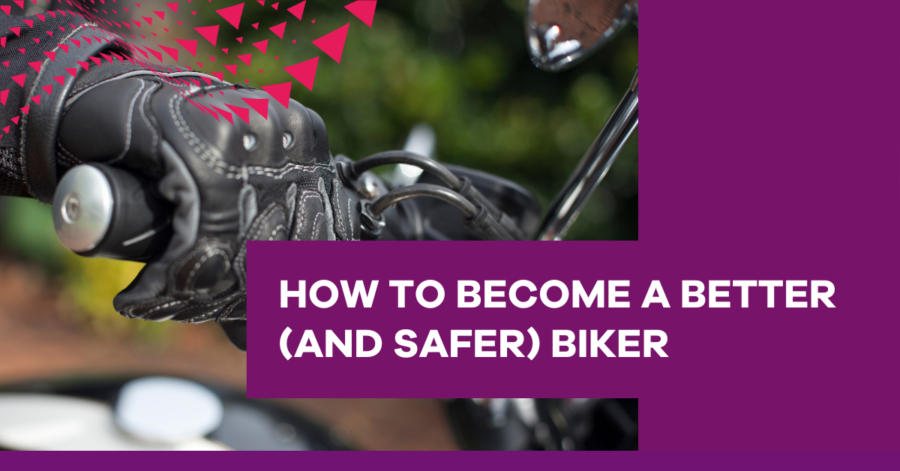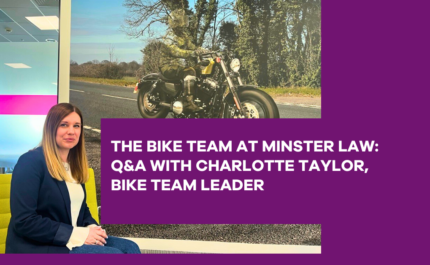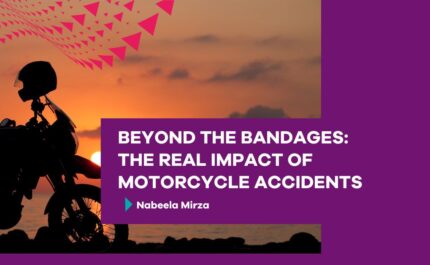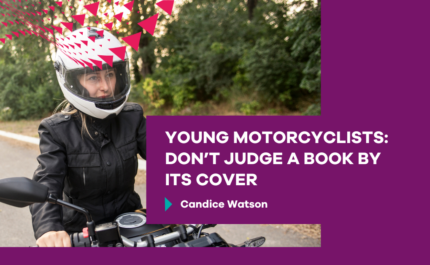
Our specialist bike team has vast experience in dealing with bike related injuries and, as many of them are also bikers, they know all too well the importance of being safe.
As with any skill, you become a better biker through a mix of training, practice, and experience. The starting point for any motorcyclist, to show that you’re safe on the road, is to learn the basic skills in a Compulsory Basic Training (CBT) course. Then you need to complete further training and testing to work towards a full licence and the ability to ride the motorbike of your dreams.
The motorcycle licencing process
Passing your motorbike licence can appear complicated as there are lots of options depending on your age – CBT, A1 and A2 or Mod 1 and Mod 2 and the full, ‘A’ licence. The process is designed to help people continue improving their skills as they move up the power to weight ratio of motorcycles.
For example
- To ride a motorcycle with a more powerful engine than 125cc, you’ll need at least a A2 motorcycle licence.
- If you want to ride a 750cc bike, you’ll need a full A licence and be 24 years of age or older. If you only have CBT or A1, you must be older than 24 to go instantly to taking the full A licence test. If you are under 24, the “normal” route is to get your A1 first – then when you turn 19 or have held this for 2 years, you are eligible to take the A2 test. Then when you have held the A2 licence for 2 years and are the age of 21, you can take the full A licence test.
Here we break down the key steps that will take you on to becoming a competent driver and staying safe on the roads.
Step 1 – The CBT course
To ride a motorbike on public roads, you’ll first need to get your provisional licence (which you can apply for three months before your 16th birthday). Once you’ve got this, you’ll need to complete compulsory basic training (CBT), which allows you to ride your bike on public roads.
CBT was introduced by the Government in December 1990, and you need to do it unless you passed your car driving test before 1 February 2001. You can find local CBT training centres here.
CBT teaches you how to ride safely and control a motorcycle or scooter, how a motorcycle works, and the safety and maintenance checks you should do. You’ll also spend a couple of hours on different roads to improve your practical biking skills. The CBT shows that you know enough of the basics to get practising your motorbike skills on the roads. You’ll be awarded the DL196 certificate on completion of your CBT.
The kind of bike you can ride once you have your CBT licence depends on your age. If you are only 16 you are restricted to a 50cc moped, limited to 28mph. If you have a CBT and are 17 and older, you can ride a scooter or motorbike up to 125cc up to an engine power of 11kW.
Step 2 – Getting a full bike licence – A1 and A2
The second step after your DL196 is the A1 licence which is often referred to as Mod 1 and the A2 licence which is referred to as Mod 2. They both comprise of theory and practical riding tests. Mod 1 takes place in a controlled area off public roads and Mod 2 on the open road with an examiner following you on a bike.
You need to complete Mod 1 and Mod 2 to get any full licence – whether it be A1, A2, or A. Even if you complete each licence in order as above, you still must do Mod 1 and Mod 2 again for each licence category. Overall, it’s basically a two-part test – if you finish your Mod 1 and haven’t done the Mod 2 you aren’t entitled to anything, it’s just a requirement that lets you go for the Mod 2 road test.
If you’re 17-18 years of age, you can sit a theory and practical test to get an A1 licence. This means you can cast off your L-plates and ride on the motorway, but you will be limited to 125cc and 14.8bhp.
Alternatively, you can do your CBT, wait until you turn 19 and then take a two-part practical test to qualify for an A2 licence. At this stage you’ll be looking at bikes that are around the 550-600cc mark and no more than 0.2Kw of power per kilo. As with the Mod 1, you’ll be able to ride on the motorway and take a passenger.
Step 3 – A licence
Once you’ve had an A2 licence for two years, you can take another two-part practical test and a theory test to finally get your A licence – the full, unrestricted motorbike licence – to ride any bike you want. This makes the minimum age to qualify for an unlimited bike 21 if you have the relevant experience.
If you started the motorcycle licence journey when you were 16, you can go for your full licence at the age of 21. If you started later however, you’ll have to wait until you’re 24.
This is the licence you need to be able to ride your dream bike!
Advanced biker training options
You’ve done the training, and have the appropriate licence. As you start to gain more experience on the roads, and take on board all the skills you have learned you will soon become a better biker.
At some point you may wish to better your skills and do some advanced rider training.
Advanced riding courses are aimed at making you a safer, more confident rider, a biker who can react quickly to a particular hazard before it becomes a dangerous situation thereby reducing the risk of accidents.
In the UK there are three main training bodies for advanced riding – The Institute for Advanced Motoring (IAM), the Royal Society for the Prevention of Accidents (RoSPA) and a government qualification called the Enhanced Rider Scheme (ERS). Further information is available on their websites.
Of course, the different licencing levels are only there if you want them. Some people test up to the level they are happy with and then stick with a bike in the appropriate category. Everyone has different motivations for biking, and we say ride the bike that meets your needs in the safest way possible.
Article published March 2023.



